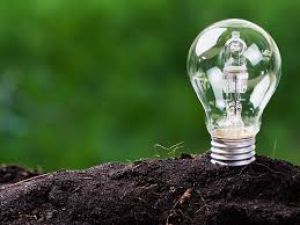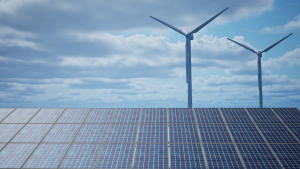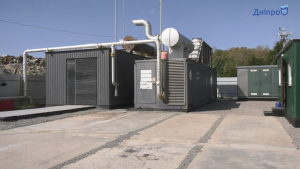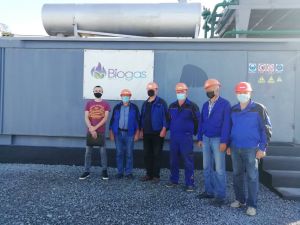ПРОВІДНИЙ ВИРОБНИК ЕЛЕКТРОЕНЕРГІЇ З ВІДНОВЛЮВАНИХ РЕСУРСІВ
500
РОБОЧИХ МІСЦЬ
15
БІОГАЗОВИХ ЕЛЕКТРОСТАНЦІЙ
2
ТЕС НА БІОМАСІ
1
ГАЗИФІКАТОРИ

| Енергетична незалежність через децентралізацію: нова дорожня карта розвитку України до 2030 року | Міжнародне енергетичне агентство (IEA) представило звіт «Empowering Ukraine Through a Decentralised Electricity System», який окреслює стратегічний шлях до відбудови та модернізації енергетичного сектору України. Clear Energy Group аналізує ключові висновки звіту та можливості для розвитку розподіл… | Читати |

| Регуляторна невизначеність і нестача банківських ресурсів стримують інвестиції в українську енергетику | Україна, як і більшість країн, що розвиваються, стикається з системними бар’єрами для залучення інвестицій у «зелену» енергетику. Попри те, що глобальні вкладення у сектор сягнули рекордних 3 трильйонів доларів | Читати |

| Аналіз ринку зарядних станцій в Україні: головні тенденції, виклики та перспективи | Ринок зарядної інфраструктури в Україні переживає справжній бум. Попри всі виклики, які несе війна, попит на автономні джерела енергії та зарядні станції зростає. За оцінками Pro-Consulting, обсяги виробництва зарядних станцій зросли майже вдвічі: з понад 12 300 одиниць у 2023 році до 22 700 у 2024… | Читати |

| Відновлювана енергетика України: шанс для країни та пріоритет для ЄС у контексті децентралізації та європейської інтеграції | Україна має колосальний потенціал стати стратегічним партнером Європейського Союзу у сфері зеленої енергетики. Значні природні ресурси, низька щільність населення та географічні масштаби створюють унікальні умови для масштабного розвитку ВДЕ — від вітрової та сонячної енергетики до біометану й водн… | Читати |

| Голова Наглядової ради Clear Energy Group Петро Багрій отримав спеціальну премію «Людина року-2024» | 1 травня 2025 року відбулася 29-та урочиста церемонія вручення премії «Людина року–2024». Цьогорічна програма під символічною назвою «Країна героїв. Достойні слави!» була присвячена кожному українцю, чия відвага, стійкість і самопожертва стали щитом для держави в час війни.
Петро Багрій, Голова На… | Читати |

| Як працює станція дегазації у Дніпрі | Одна з найбільших екологічних проблем в Україні – часті пожежі на сміттєзвалищах. Займається метан, що утворюється на полігонах. Цієї проблеми можна уникнути. Більше того – звалищний газ може приносити користь.
У Дніпрі на Правобережному полігоні твердих побутових відходів з листопада минулого рок… | Читати |

| Поточний стан Smart City в Україні та світі | Система розумних міст (Smart City) – це глобальна тенденція, яка бере свій початок з 2009 року. Вона спрямована на створення комфортного, безпечного й зручного середовища для жителів за допомогою сучасних технологій та інноваційних рішень. Дізнайтеся, як впроваджується ця концепція в Україні, які т… | Читати |

| Електрична революція на дорогах України: ринок EV долає позначку в 160 тисяч авто | Ера електромобілів в Україні — це вже не майбутнє, а сьогодення. Українці дедалі впевненіше роблять вибір на користь екологічного та економного транспорту, а статистика підтверджує цей тренд. Станом на червень 2025 року, за офіційними даними МВС, кількість зареєстрованих в Україні електрокарів пере… | Читати |

| Нагорода знайшла героя! «Кліар Енерджі» отримала цьогорічну премію «ЕКОтрансформація-2020»! | Це головна премія в сфері екології, заснована Професійною асоціацією екологів України. Нею нагороджують за значний внесок у збереження довкілля. Був номінований наш чернігівський проект – ТЕЦ на деревній трісці, де вперше в Україні застосували технологію газифікації біомаси. Теплоелектростанція пра… | Читати |

| Працювати безпечно та ефективно: на «Біогаз Енерджі» провели навчальний семінар | На базі ТОВ «Біогаз Енерджі» відбувся семінар для інженерно-технічних працівників щодо дотримання вимог законодавчих на нормативно-правових актів з питань охорони праці. Участь у заході взяли головний державний інспектор відділу&… | Читати |
Новини



КОНТАКТИ
Запитання
З будь-якими питаннями або відгуками, будь ласка, звертайтеся за телефоном: Гаряча лінія - +380 44 334 40 51
або пишіть:
Головний офіс
Україна, Київська область, с. Петропавлівська Борщагівка, вул. Соборна, 2В
КОНТАКТИ
ПРО КОМПАНІЮ
НАПРЯМКИ ДІЯЛЬНОСТІ










